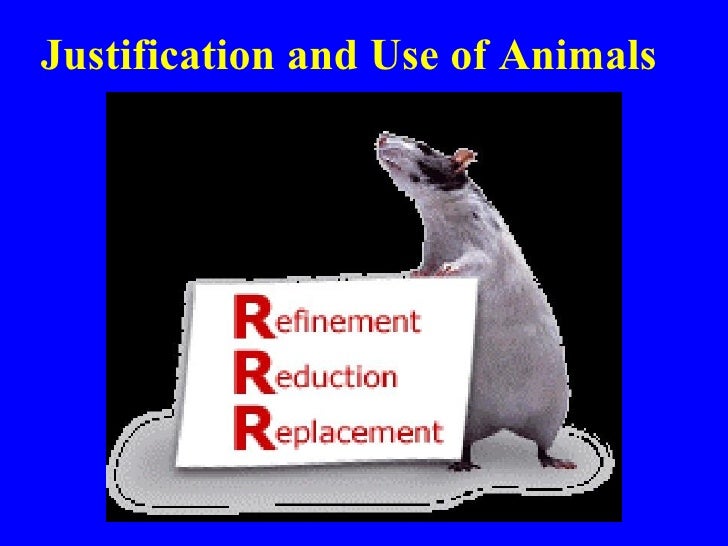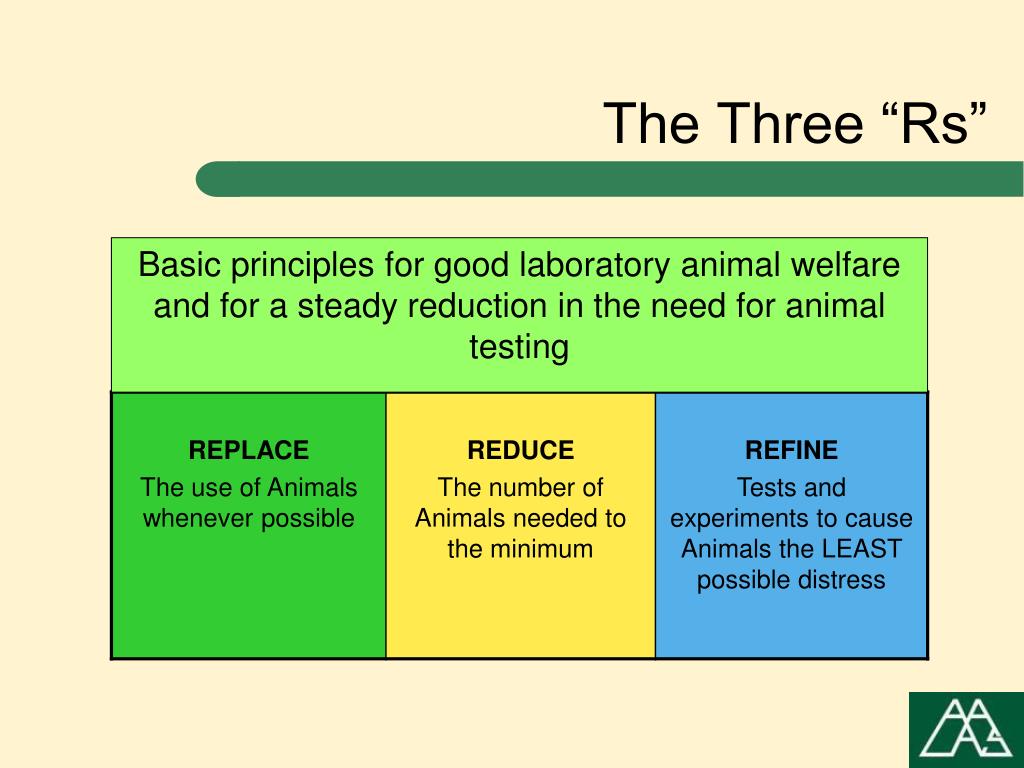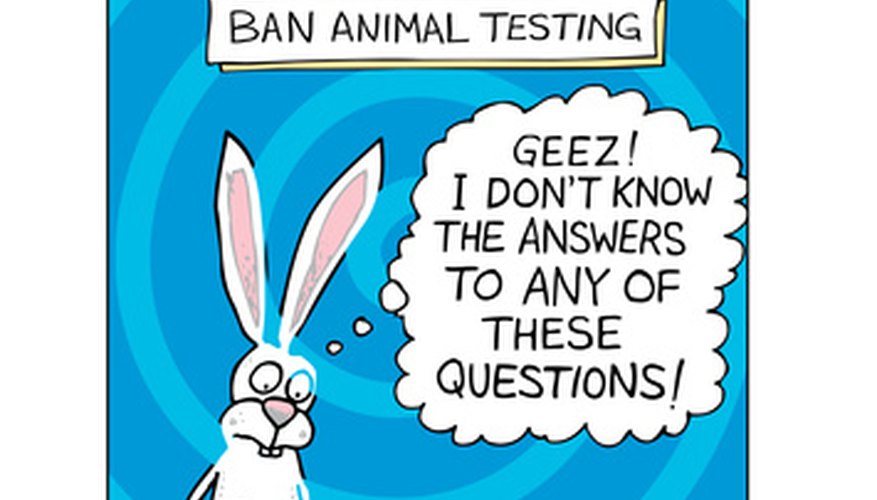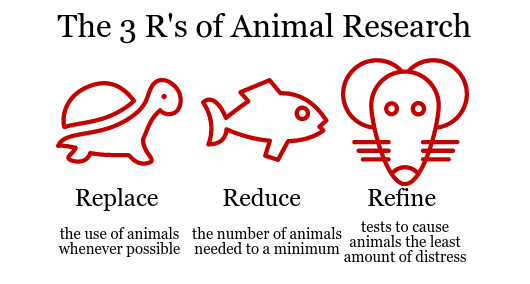The 3 R's Animal Testing
The 3rs of animal testing are reduce, replace and refine. In canada, continuing improvements to the welfare of animals used in science have occurred over the past few decades partly because of the explicit adoption of a set of principles to guide the ethical evaluation of animal use.
What Should We Do? BEYOND HUMAN
The use of databases, information centres and guidelines when planning research that may involve animals.

The 3 r's animal testing. These rs are reduction, refinement, and replacement. Animal ethics committees must take the 3 rs into account when considering proposals for research, testing, or teaching. If playback doesn't begin shortly, try restarting your.
Replacement alternatives refer to methods which avoid or replace the use of animals. Replacement some of the practical alternatives that follow the replacement guidelines include the use of cell cultures, in vitro models, and imaging and computer models. This concept was developed over 60 years ago and aimed at conducting scientific tests on animals in a more humane way.
These principles encouraged researchers to reduce the number of animals used in experiments, limit their pain/distress, and replace them with alternatives if possible. In 1959, british academics w.m.s. The 3 rs stand for replacement, reduction and refinement.
There should be formal and informal mechanisms for the education and training of academic, industrial and government scientists and officials in the three rs to ensure compliance with the spirit and letter of laboratory animal protection. Replacing animals by computer models) and relative replacements (i.e. Burch, members of the universities federation of animal welfare, published “the principles of humane experimental technique.
This includes both absolute replacements (i.e. They proposed a principle, or model, for amore ethical animal experimentation and able to minimize the suffering caused to laboratory animals. The words now used almost universally by the research community and by animal protection advocates to describe alternatives are “the three rs” — replacement, reduction, and refinement.
This is the “three rs” tenet — replacement, reduction and refinement (3). Replacing vertebrates, with animals having a lower potential for pain perception, such. Replacement alternatives refer to methods which avoid or replace the use of animals.
Animal experiments may be performed only if no other suitable methods are available to investigate the research question and if the The november 2005 issue of animal welfare was dedicated to the three r's and included: They established the “3 rs” which refer to the reduction, refinement and replacement of animals (ferdowsian et al.
The 3rs concept was developed over 50 years ago by two scientists, drs. Replacing animals by computer models) and relative replacements (i.e. The 3 rs stand for replacement, reduction and refinement.
Even though animal experiments are performed by the three rs concept, animal researches which do not comply with international rules and standards are not accepted as well. The principles of the 3rs are anchored in: Replacing vertebrates, with animals having a lower potential for pain perception, such as.
Smith aj & allen t (2005): The use of the three rs in animal testing are principles for the ethical use of animals in testing: 3 rs must be considered when evaluating proposals.
Any harm to animals must be minimised, and weighed against the benefit to humans or other animals. Replacement, reduction, and refinement, are important from a legal, ethical and scientific standpoint. “3rs alternatives” refers to the reduction, refinement, and replacement of animals used in research, testing, and education.
The 3 rs stand for replacement, reduction and refinement. This page clarifies these terms, describes efforts to promote “the three rs,” and suggests good sources of further information. Replacement is a method requiring researchers to use alternative methods to conduct scientific research.
These are the 3 main ways that people are trying to help the problem of animal testing. These methods reduce the need for animals in research and keep the animals safe. William russell and rex burch.
Since the three rs of replacement, reduction and refinement was proposed by russel and birch in 1959, researchers have a moral duty to minimize harm to animals. What activities can you do in applying the 3 r's? The main goal of applied animal.
This includes both absolute replacements (i.e. This means that animals should only be used when there are no alternatives. All research using animals in the us, for example at universities and pharmaceutical companies, is regulated by the animal welfare act (awa), which is administered by the animal and plant health inspection service (aphis) of the us.
Reduction aims to reduce the number of animals used in. Replacement alternatives refer to methods which avoid or replace the use of animals.

The 3Rs principle Recherche animale

Animal Research and the Three Rs (Reduction, Refinement
UM, ULAM Research Featured As Part of North American 3Rs

Animal testing for and against
PPT Who Monitors the Use of Animals in Research

Test Awardwinning modeling supports 3Rs (Clone)

Copy of Animal Testing by Mike Wen

Animal Research and the Three Rs YouTube

Research Methods Ethics II (Animal Research)

Research Methods in Psychological Science Reading

Research needed to stop animal testing The City Journal

PPT Biomedical Research and the Veterinary Technician

Roche Animal Research at Roche

Advantages and Disadvantages of Animal Testing Sciencing

3Rs Research Medical Research Council

Animal Care & Use Sacramento State



Post a Comment for "The 3 R's Animal Testing"